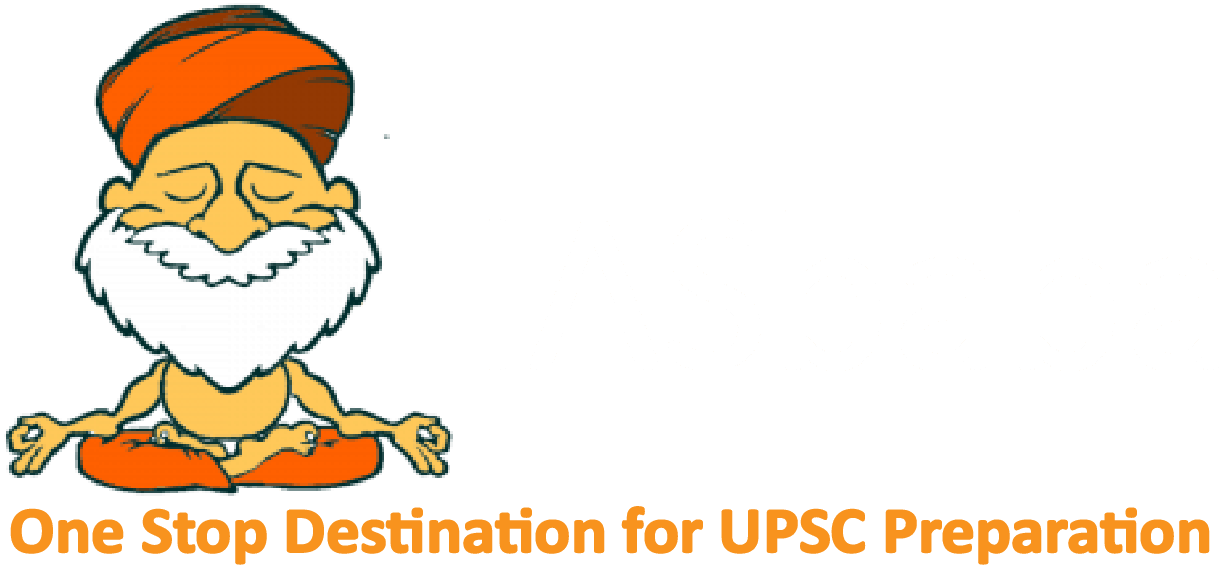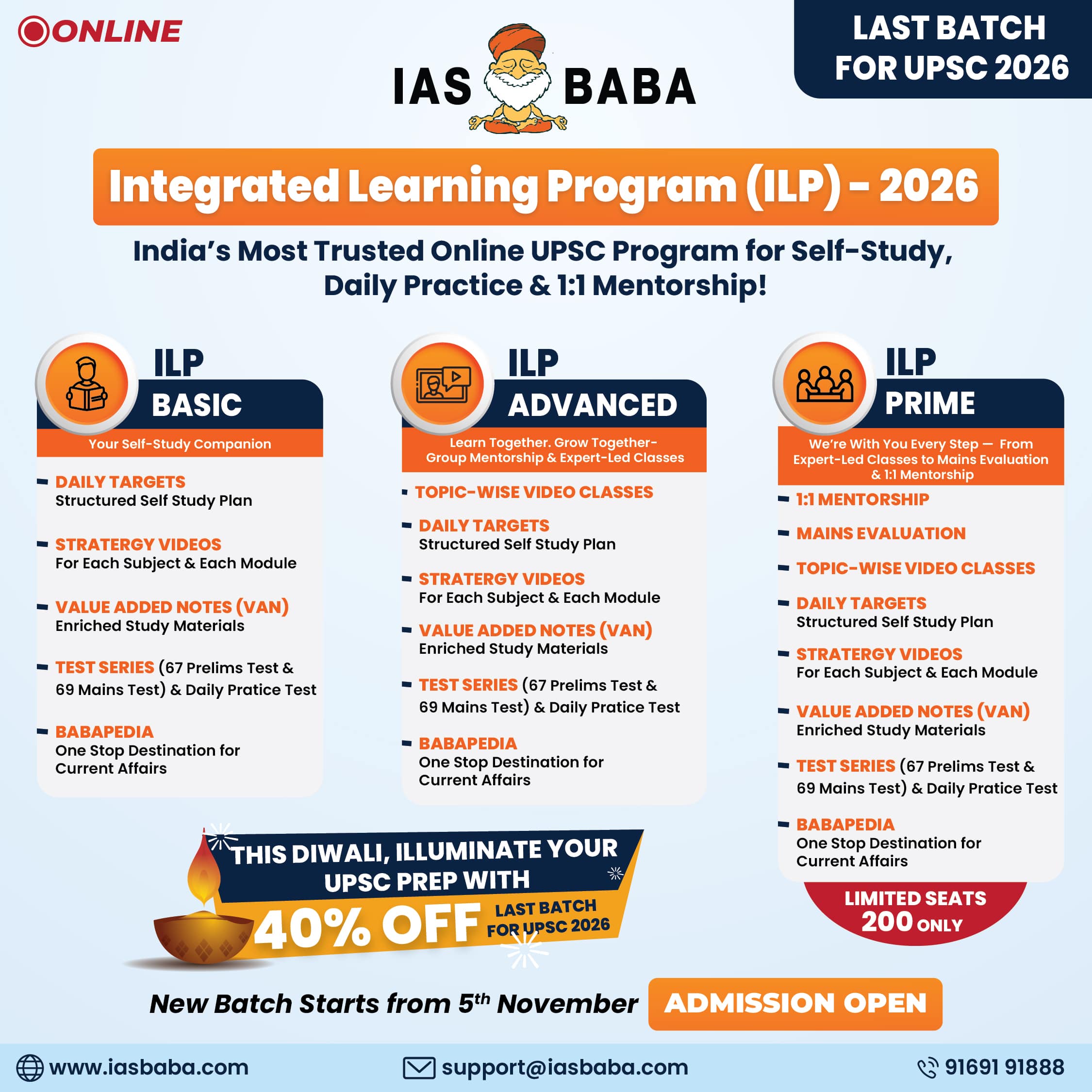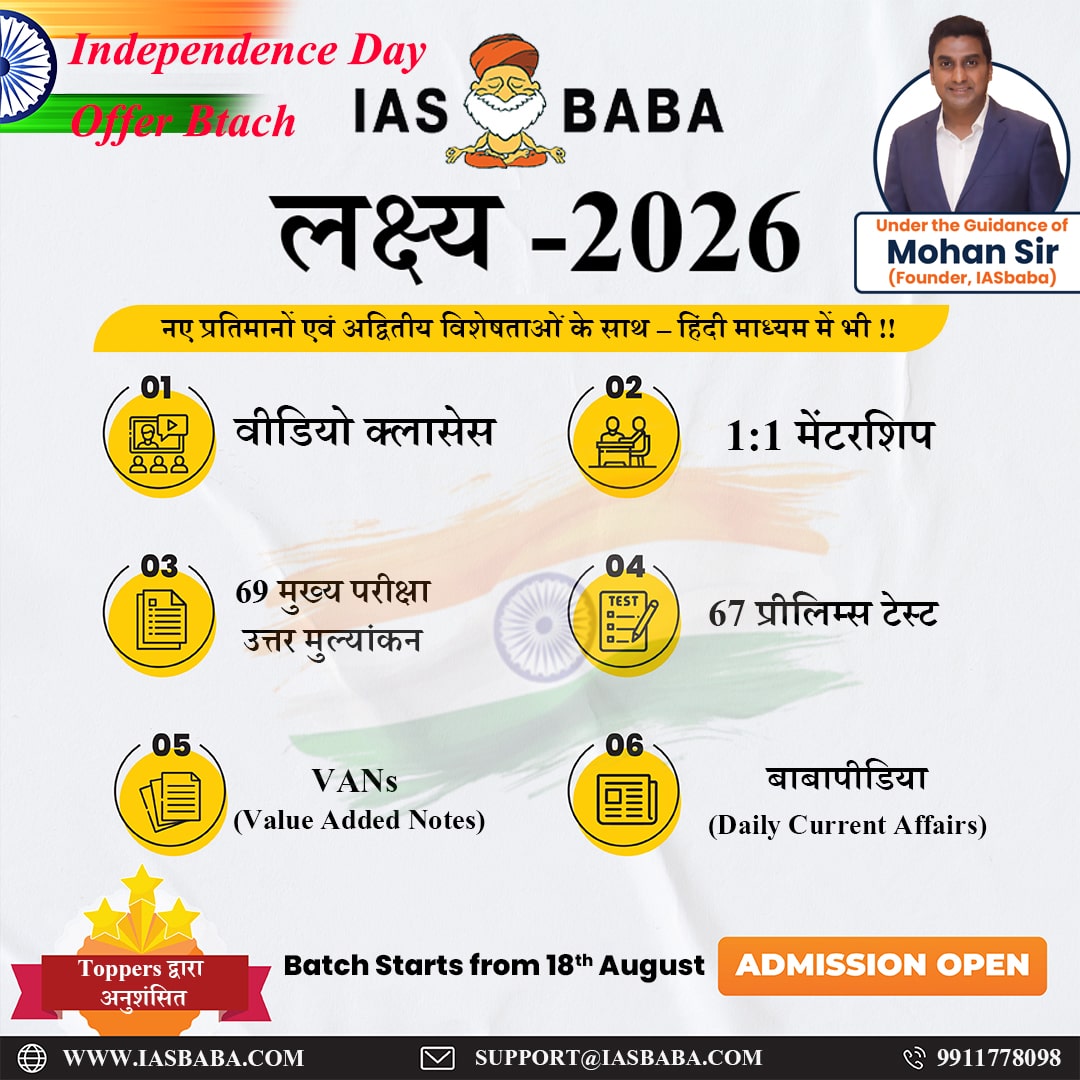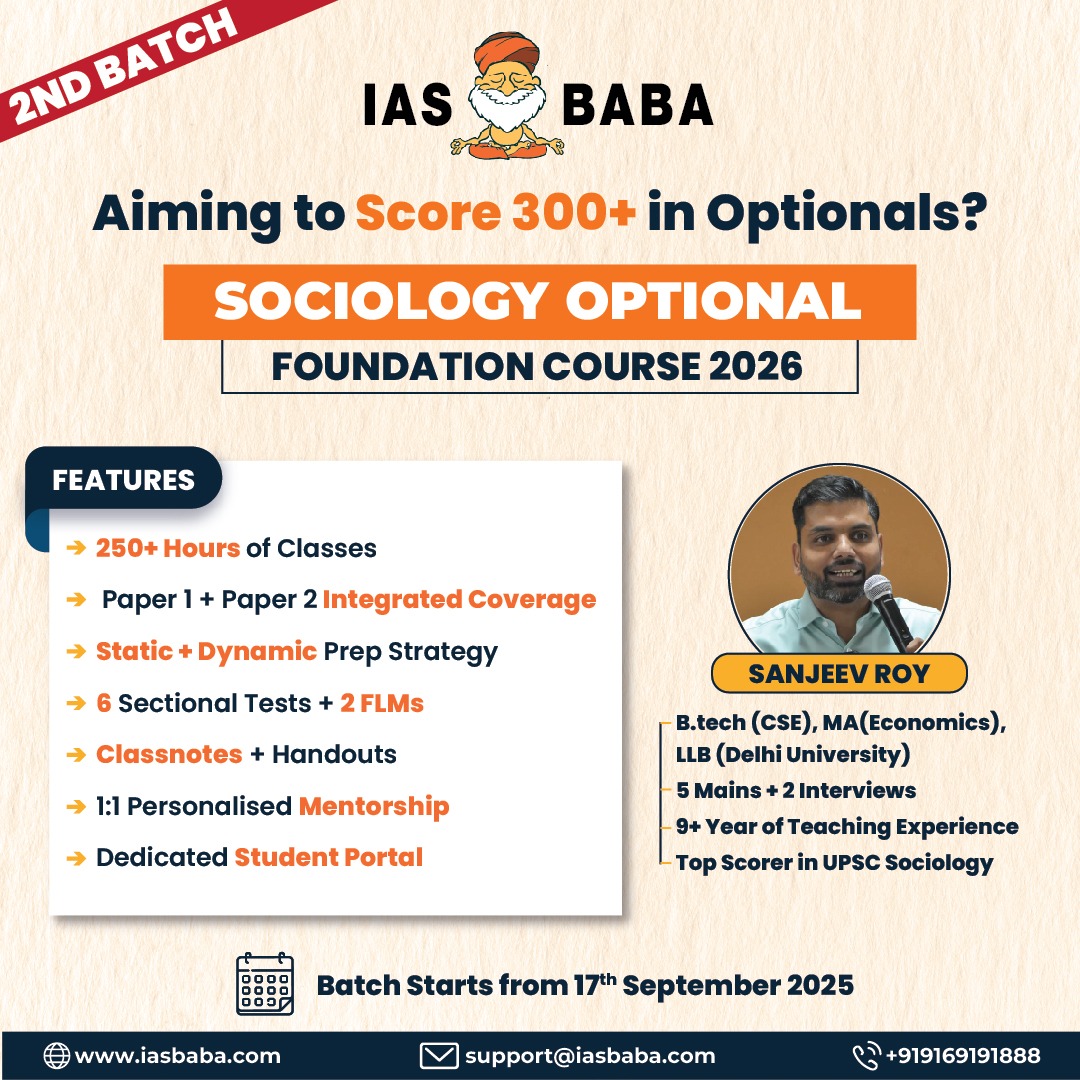IASbaba's Daily Current Affairs Analysis
Archives
(PRELIMS Focus)
Category: Science and Technology
Context:
- The Nobel Prize for Physics this year will be awarded to three scientists to tease greater insight into the workings of the quantum world.
About Nobel Prize in Physics 2025:
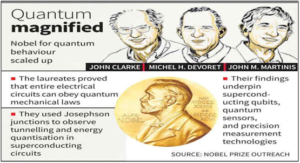
- Awardees: The Nobel Prize 2025 in Physics has been awarded to John Clarke from the University of California, Berkeley, Michel H. Devoret of Yale University and the University of California, Santa Barbara, and John M. Martinis of the University of California, Santa Barbara.
- Awarded for: They have been recognized for their pioneering work on the macroscopic quantum phenomena in electrical circuits, specifically the demonstration of quantum tunneling and energy quantization on a macroscopic scale.
- Significance: This groundbreaking research has significantly advanced our understanding of quantum mechanics in engineered systems and opened new avenues for quantum technology applications.
- About the experiment:
- Much like early insight into quantum mechanics paved the way for transistors and silicon chips in the 1950s, the three scientists devised an electrical circuit with two superconductors, components that can conduct a current without any electrical resistance.
- They separated these with a thin layer of material — called a Josephson junction — that did not conduct any current at all.
- In this experiment, they showed that they could control and investigate a phenomenon in which all the charged particles in the superconductor behave in unison, as if they are a single ‘particle’ that fills the entire circuit.
- Following this, they were able to demonstrate that such a particle could be made to behave simulating the flow of electricity even without voltage, a prerequisite for the flow of current.
Source:
Category: Geography
Context:
- A supermoon was visible on the night of October 7 and will appear twice more in November and December.
About Supermoon:
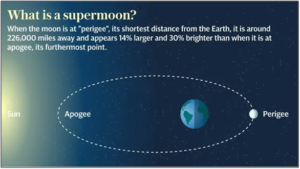
- Feature: A supermoon occurs when a full moon or new moon coincides with the moon’s closest approach to the earth in its elliptical orbit, a point known as the perigee.
- Reason: Because the moon’s orbit is not a perfect circle, its distance from the earth varies throughout the month by around 50,000 km. When the moon is near its perigee and also directly opposite the sun, the full moon appears about 14% larger and 30% brighter than when it is at its farthest point. This is the supermoon.
- Nomenclature: The term “Supermoon” was coined by astrologer Richard Nolle in 1979, defining it as a special event when a full moon is within 90 percent of its closest point to Earth.
- Frequency: In a typical year, there may be two to four full supermoons and two to four new supermoons in a row.
- Impact: Supermoons influence the tides, creating perigean spring tides. These tides are slightly higher and lower than usual because the moon’s stronger gravitational pull acts in concert with that of the sun. While the changes are typically modest, they can exacerbate coastal flooding when combined with storm surges.
- Significance: Culturally, supermoons have long captured human imagination, inspiring folklore and spiritual observances across civilisations. They also offer opportunities for astronomers and photographers to observe lunar surface details and study tidal effects more clearly.
Source:
Category: Economy
Context:
- RBI is waiting for other countries to launch digital currency and is in no hurry to roll out Central Bank Digital Currency (CBDC) nationwide for retail, said Deputy Governor.
About Central Bank Digital Currency (CBDC):
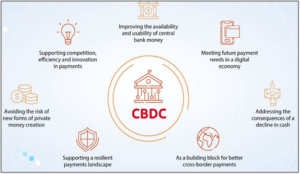
- Nature: A CBDC is a legal tender issued by a central bank in digital form.
- Authorised by Central Bank: Unlike private cryptocurrencies, CBDCs are backed by the central bank, ensuring stability and trust.
- Objective: The main objective is to mitigate the risks and trim costs in handling physical currency, costs of phasing out soiled notes, transportation, insurance and logistics.
- Use of wallets: The digital fiat currency or CBDC can be transacted using wallets backed by blockchain.
- Difference with virtual currencies: Though the concept of CBDCs was directly inspired by Bitcoin, it is different from decentralised virtual currencies and crypto assets, which are not issued by the state and lack the ‘legal tender’ status.
- First country to launch: Bahamas was the first economy to launch its nationwide CBDC namely Sand Dollar in 2020.
- Major advantages:
- CBDCs leverage digital security measures, potentially reducing the risk of counterfeiting and theft compared to physical cash.
- Digital transactions can be settled instantly and efficiently, facilitating faster and more cost-effective payments.
- Programmable features could be introduced to enable targeted disbursement of government benefits or encourage specific financial behaviours, promoting financial inclusion.
- Challenges associated:
- Robust security measures are crucial to protect the e-rupee system from cyberattacks.
- Balancing user privacy with the need for anti-money laundering and countering financing of terrorism measures is a critical aspect.
- The RBI made CBDC non-remunerative and non-interest-bearing to mitigate potential risks of bank disintermediation.
Source:
Category: Environment and Ecology
Context:
- A 32-year-old forest watcher in the Periyar Tiger Reserve was found dead in the Ponnambalamedu forest area in Pathanamthitta district of Kerala.
About Periyar Tiger Reserve:
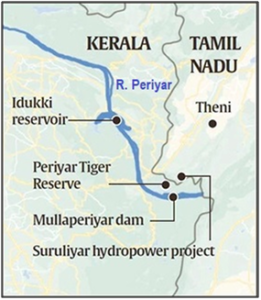
- Nomenclature: It is named after the Periyar River, which originates within the reserve.
- Location: It is situated in the Idukki and Pathanamthitta districts of Kerala. It is set high at Cardamom Hills and Pandalam Hills of the Western Ghats, adjacent to the border with Tamil Nadu.
- Formation: It was established as a wildlife sanctuary in 1950 and later declared a Tiger Reserve in 1978.
- Terrain: The terrain is hilly and undulating with a maximum altitude of 2016 m. The highest peak is Kottamala (2016 m).
- Vegetation: It comprises tropical evergreen forests, semi- evergreen forests, moist deciduous forests, transitional fringe evergreen forests, grasslands, and eucalyptus plantations.
- Drainage: Major rivers flowing through the reserve are the Periyar and Mullayar.
- Dams: Mullaperiyar Dam is located within the PTR.
- Flora and fauna: Important flora includes teak, mangoes, rosewood, jamun, jacarandas, terminalias, tamarind, royal ponciana, bamboo, etc. Fauna includes Elephants, Wild Pigs, Sambar, Gaur, Mouse Deer, Dole or Barking Deer, Indian Wild Dog, and Tiger.
- Unique species: It hosts medicinal plants like Syzygium periyarensis, Habenaria periyarensis (an orchid), and Mucuna pruriense thekkadiensis.
- Tribes: It is home to six tribal communities including the Mannans, Paliyans, Malayarayans, Mala Pandarams, Uralis, and Ulladans, who live within the reserve.
Category: International Relations
Context:
- Residents on a tiny island off the coast of Venezuela and Greenpeace urged the Netherlands to take action on the climate crisis, at the opening of a trial in The Hague, which follows an advisory opinion issued by the International Court of Justice (ICJ).
About International Court of Justice (ICJ):
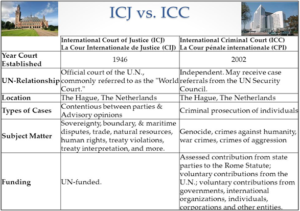
- Establishment: ICJ was established in 1945 by the United Nations charter and started working in April 1946.
- Associated with UN: It is the principal judicial organ of the United Nations, situated at the Peace Palace in The Hague (Netherlands). Article 33 of the United Nations Charter lists the negotiation, enquiry, mediation etc. methods for the pacific settlement of disputes between States.
- Objective: It settles legal disputes between States and gives advisory opinions in accordance with international law, on legal questions referred to it by authorized United Nations organs and specialized agencies.
- Uniqueness: Unlike the six principal organs of the United Nations, it is the only one not located in New York (USA).
- Structure: The Court is composed of 15 judges, who are elected for terms of office of nine years by the United Nations General Assembly and the Security Council.
- Three from Africa.
- Two from Latin America and Caribbean.
- Three from Asia.
- Five from Western Europe and other states.
- Two from Eastern Europe.
- Jurisdiction:
- The judgment of ICJ is final, binding on the parties to a case and without appeal (at the most it may be subject to interpretation or, upon the discovery of a new fact, revision).
- However, ICJ advisory opinions, requested by UN organs and specialized agencies, are not binding.
Source:
(MAINS Focus)
(GS Paper 3: Indian Economy – Mobilization of Resources, Growth and Development)
Context (Introduction)
India’s self-reliance journey has evolved from food and digital security to financial self-reliance. With volatile global capital flows, mobilising domestic wealth — especially the vast household gold reserves — offers a sustainable and sovereign path to finance India’s growth.
Gold as a Catalyst for Financial Self-Reliance
- Cultural and Civilisational Value: Gold in India represents both emotional security and financial strength, embodying Atmanirbharta through centuries.
- Massive Domestic Holdings: Indian households possess around 25,000 tonnes of gold, worth nearly $2.4 trillion (55% of GDP) — a store of value larger than India’s total bank credit.
- Economic Paradox: Despite this, India imports 87% of its gold demand, making gold imports responsible for up to one-third of the trade deficit between 2010–13.
- Shift to Domestic Financing: As global FDI and project finance flows decline (by 11% and 27% respectively in 2024), India must reduce dependency on external capital.
- Reimagined Monetisation: A trust-based gold monetisation scheme, combining global best practices with local innovation, can unlock household gold and recycle it into the economy.
Criticisms and Challenges
- Past Failures: Earlier gold deposit schemes faltered due to limited reach, poor infrastructure, and low public awareness.
- Trust and Taxation Concerns: Fear of scrutiny, GST on deposits, and lack of transparency dissuade participation.
- Infrastructure Gaps: Despite growth, hallmarking and assaying centres remain inadequate for mass participation, especially in rural India.
- Cultural Resistance: Deep cultural attachment and preference for physical possession over financialisation hinder mobilisation.
- Administrative and Banking Delays: Complex documentation and coordination issues between banks and collection centres increase friction.
Reforms and Policy Measures Suggested
- Strengthen Infrastructure: Expand BIS-registered hallmarking and purity testing centres nationwide for standardised valuation.
- Integrate Stakeholders: Create a unified digital network connecting banks, fintech platforms, and assaying centres for seamless gold handling.
- Digital Gold Accounts: Introduce metal-balance accounts, allowing citizens to monitor gold holdings digitally like bank deposits.
- Simplify Regulations: Exempt gold deposits from GST and customs duties and ensure a “no questions asked” policy to build trust.
- Incentivise Participation: Offer attractive interest rates (4.5–6.5%), tax benefits, and easy redemption options to draw households into the formal economy.
Conclusion
India’s next frontier of Atmanirbharta lies in financial independence. By converting its cultural wealth in gold into productive capital, India can fund its own aspirations, strengthen its economy, and redefine self-reliance in both spirit and substance.
Mains Question
- Discuss how mobilization of domestic resources through gold monetisation can contribute to sustainable economic growth and reduce external sector vulnerability in India. (250 words, 15 marks)
(GS Paper 3: Internal Security – Linkages between Development and Spread of Extremism)
Context (Introduction)
Naxalism, once India’s most serious internal security threat, has steadily declined in strength and influence. With improved governance, modernised policing, and developmental integration, the movement now stands at its weakest, signalling a decisive shift in India’s internal security landscape.
Nature and Evolution of the Problem
- Ideological Roots: Originating from the 1967 Naxalbari uprising, the movement was inspired by Marxist–Leninist–Maoist ideology and aimed at overthrowing the state through armed struggle.
- Expansion and Consolidation: The 2004 merger of the People’s War Group and Maoist Communist Centre formed the CPI (Maoist), spreading influence across 200 districts in the “Red Corridor.”
- Socio-economic Grievances: Exploitation, displacement, and alienation of tribal and marginalised communities provided fertile ground for recruitment and ideological appeal.
- Shift to Militarisation: From the 1990s, the movement became more violent, running parallel governance structures (Janatana Sarkars) in parts of Chhattisgarh and Andhra Pradesh.
- Peak and Decline: Post-2010, coordinated security operations, improved governance, and erosion of ideological legitimacy led to a sharp fall in cadre and territorial control.
Issues and Criticisms
- Leadership Crisis: The CPI (Maoist) Central Committee has shrunk from 42 to 13 members, with ageing leaders disconnected from local realities.
- Tribal Disillusionment: Atrocities by both Maoists and state-backed groups like Salwa Judum alienated tribal communities.
- Ideological Erosion: Lack of urban intellectual support and focus on violence over social mobilisation eroded the movement’s moral legitimacy.
- Development Deficits: Continued poverty, displacement, and weak governance still sustain pockets of sympathy.
- Fragmented Strategy: Inconsistent approaches across states and occasional rights violations have hindered full rehabilitation.
Government Efforts
- Security Strengthening: Formation of elite units like CoBRA (Commando Battalion for Resolute Action) and District Reserve Guard (DRG) improved counterinsurgency capacity.
- Targeted Operations: Missions like Operation Black Forest decimated leadership and disrupted strongholds in Bastar.
- Surrender and Rehabilitation: Lucrative schemes provide incentives, education, and livelihood support to surrendered cadres.
- Developmental Approach: Programmes like Integrated Action Plan (IAP) and Aspirational Districts Programme focus on infrastructure, education, and healthcare in Maoist-hit regions.
- Tribal Empowerment: Implementation of PESA and Forest Rights Act has enhanced local governance and reduced alienation.
Future Needs and Reforms
- Inclusive Governance: Strengthen administrative presence and accountability in remote tribal areas.
- Livelihood Generation: Promote forest-based industries, rural entrepreneurship, and skill training to prevent re-recruitment.
- Community Engagement: Build trust through dialogue, grievance redressal, and participatory development.
- Ideological Counter: Use education and media to promote democratic participation and constitutional protest.
- Inter-state Coordination: A unified national framework under MHA can ensure consistency in operations and rehabilitation efforts.
Conclusion
India’s fight against Maoism is nearing closure. True victory, however, lies not only in defeating insurgents but in empowering people through justice, inclusion, and sustained development — ensuring peace with dignity in every tribal heartland.
Mains Question
Q. Discuss the evolution and current status of Left-Wing Extremism in India. How have government initiatives balanced security measures with developmental and governance reforms to address this challenge? (250 words, 15 marks)
(GS Paper 2: International Relations – India and its Relations with Developed Countries)
Context (Introduction)
The changing dynamics of Western unity, shaped by US nationalism, European strategic autonomy, and global power shifts, present India with new diplomatic openings. A “multipolar West” now enables India to engage multiple partners on its own strategic terms.
Nature of the Emerging Multipolar West
- Decline of Western Homogeneity: Post–World War II Western unity under US dominance is fragmenting due to diverging political and security priorities.
- America First and Strategic Autonomy: The rise of Donald Trump’s nationalism has led Europe to pursue independent defence, trade, and technology strategies, reducing reliance on Washington.
- Europe’s Assertiveness: Initiatives like Macron’s ‘Europe Puissante’, Scholz’s Zeitenwende, and Ursula von der Leyen’s call for sovereignty mark Europe’s bid for self-reliance in economic, military, and technological spheres.
- Rearrangement, Not Decline: The West’s fragmentation is internal recalibration — the US remains powerful, but engagement terms have shifted, giving allies more autonomy.
- Asia-Europe Parallels: Asian allies like Japan, Australia, and South Korea are similarly diversifying ties, reflecting a broader trend of strategic pluralism.
Risks for India
- Weakening of Collective Action: Fragmentation of the West may weaken unified responses to authoritarian assertiveness from China or Russia.
- Uncertain US Policy: Shifting American domestic politics create volatility in long-term commitments.
- European Divisions: Internal splits — East vs West over Russia, North vs South over economics — may delay coherent policymaking.
- Balancing Challenges: India must manage contradictions among its Western partners without compromising autonomy.
- Institutional Lag: India’s internal economic and administrative reforms may not keep pace with rapid external transformations.
India’s Diplomatic Engagement and Opportunities
- Europe’s Renewed Role: Engagements such as Keir Starmer’s India visit, EFTA trade pact, and ongoing EU negotiations signal growing India–Europe convergence.
- Strategic Diversification: A fragmented West allows multiple cooperation channels — trade with the EU, technology with the UK, defence with France, and investment with Nordic states.
- Global Connectivity: Collaboration under the EU’s Global Gateway and India’s Indo-Pacific outreach enhances resilient supply chains and digital infrastructure.
- Shared Democratic Values: Europe views India as a key Indo-Pacific partner in maintaining an open, rules-based global order.
- Balanced Realism: India’s steady diplomacy during US–Europe–China frictions reflects strategic maturity and multipolar adaptation.
Future Needs and Way Forward
- Institutional Modernisation: India must reform trade, technology, and governance systems to leverage Western diversification effectively.
- Economic Competitiveness: Deepen domestic manufacturing and innovation under ‘Make in India’ and Digital India to attract Western investment.
- Strategic Autonomy: Maintain equidistance between competing Western factions while expanding influence in multilateral forums like G20, BRICS, and IPEF.
- Cultural and Academic Diplomacy: Strengthen people-to-people and educational ties to deepen long-term India–Europe relations.
- Global Governance Role: Collaborate with plural Western powers to promote inclusive multilateralism, climate finance, and digital equity.
Conclusion
A multipolar West offers India both challenge and choice. By combining strategic agility with domestic reform, India can position itself as a pivotal bridge between Western pluralism and the emerging multipolar world order.
Mains Question
- Examine how the emerging “multipolar West” is reshaping India’s foreign policy calculus. How can India leverage this transition to enhance its strategic and economic partnerships with developed nations? (250 words, 15 marks)

